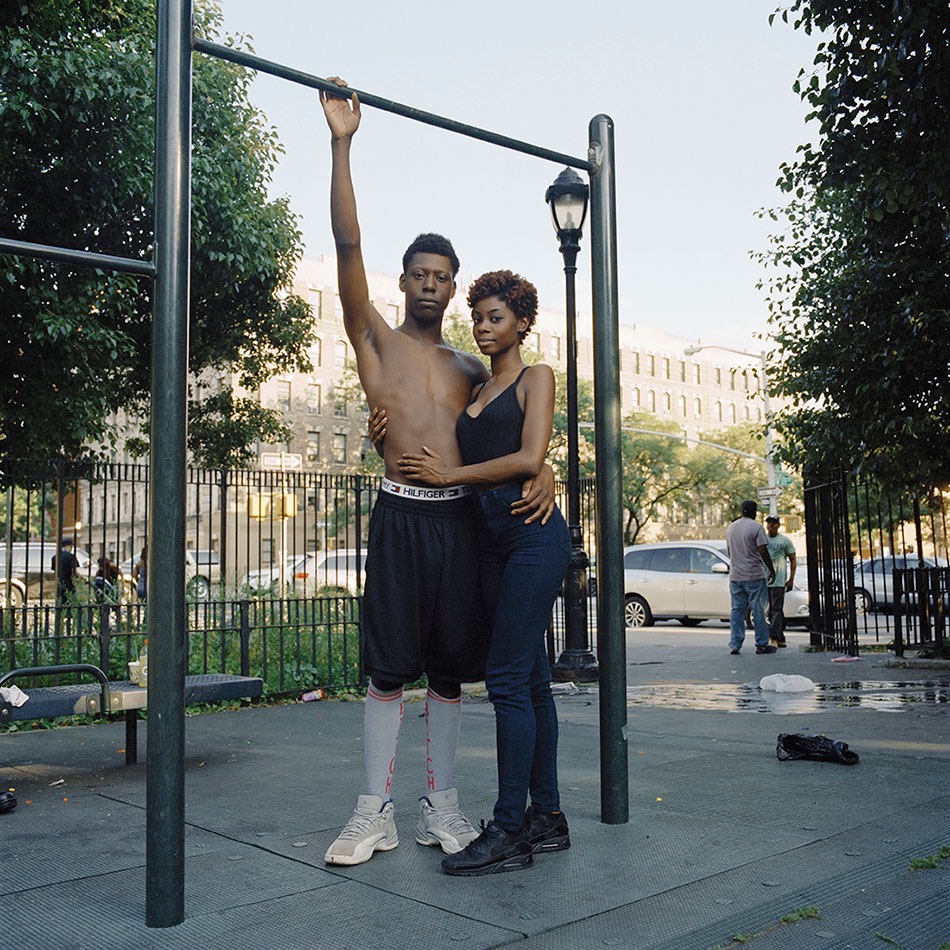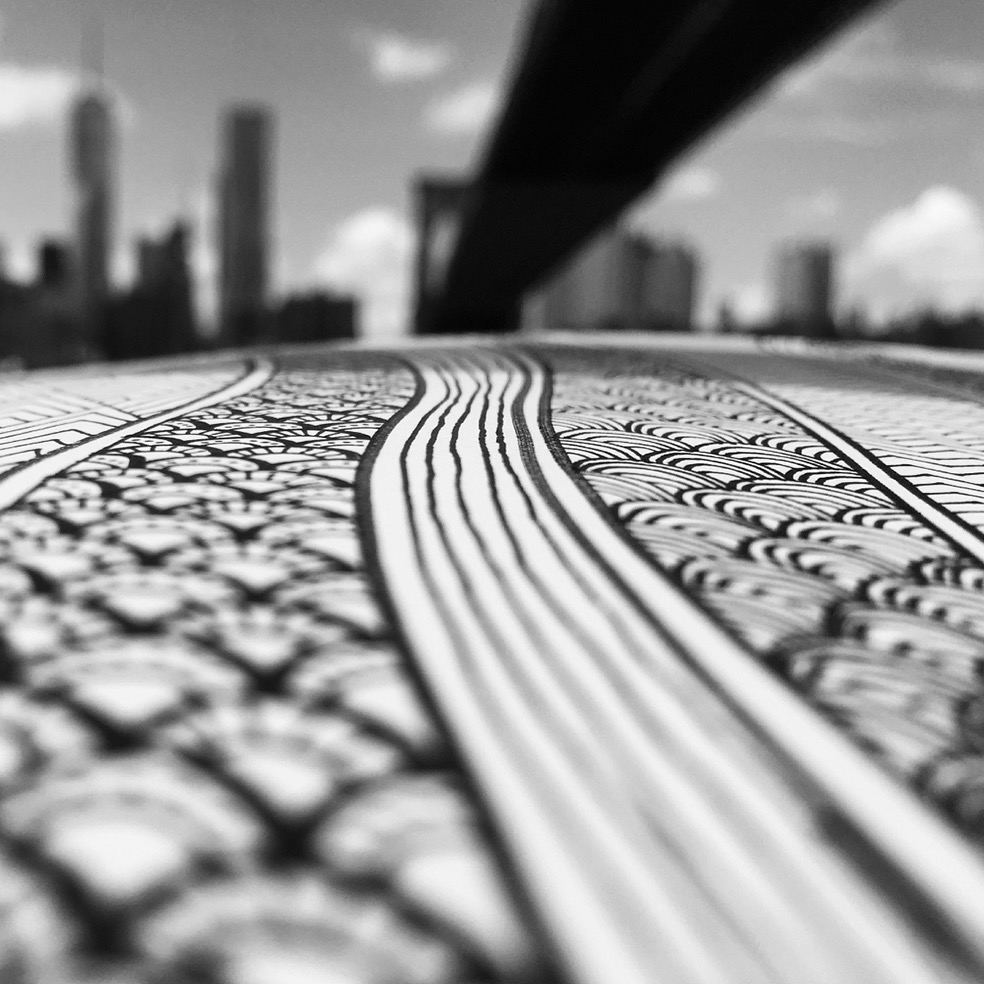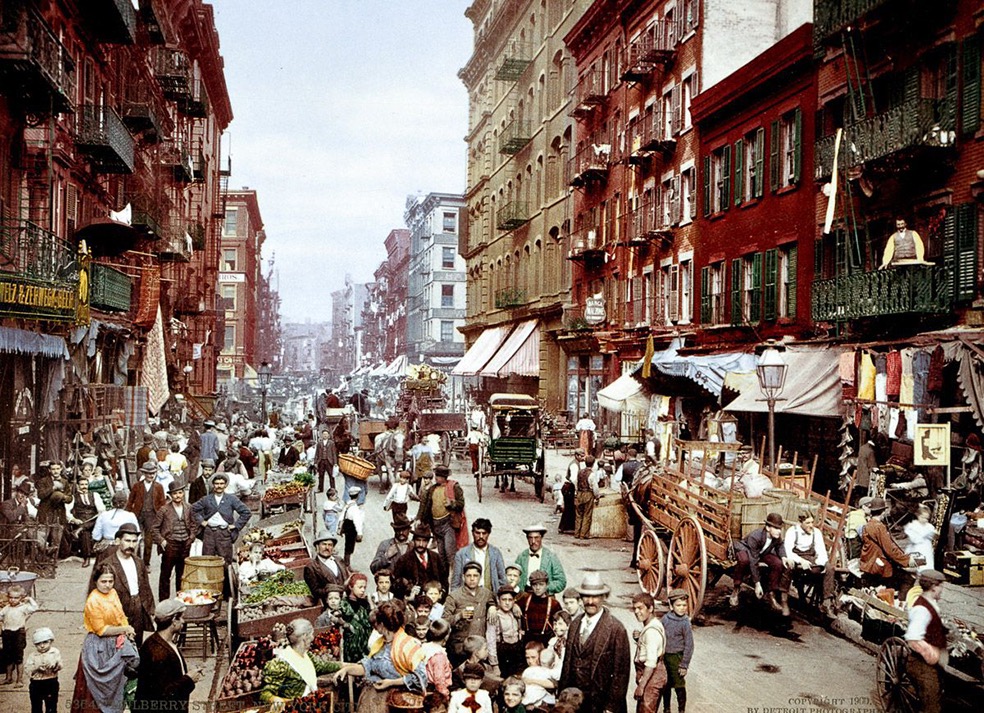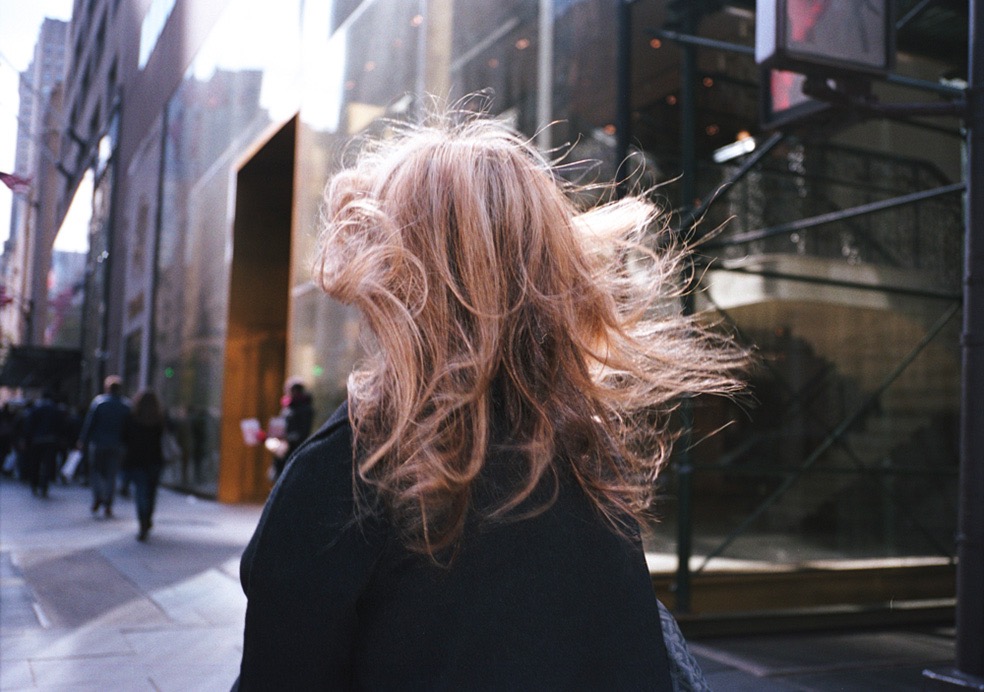Shooting in all seasons and from dawn to dusk, Steinmetz captures the thrilling complexity and romance of 21st-century New York, with its new skyline and waterfront landscape, dazzling contemporary architecture and historic buildings – along with parks and streets and rooftops used for every possible purpose, and the massive infrastructure that keeps it all going. Included are such iconic places as Central Park and Times Square, new landmarks such as the High Line and the September 11 Memorial, One World Trade Center and other additions to the exclusive list of the world’s tallest buildings, and intriguing sites throughout the five boroughs. George Steinmetz records some of the city’s beloved traditions – such as the Rockefeller Center Christmas tree, the New York marathon, and the U.S. Open – but what makes his photographs special is their surprising intimacy, as they capture New Yorkers going about their lives in their remarkable city.
George Steinmetz
New York Air: The View From Above
Hardcover: 224 pages
Publisher: Abrams (October 13, 2015)
ISBN-13: 978-1419717895
Order the book:
www.abramsbooks.com
www.amazon.com
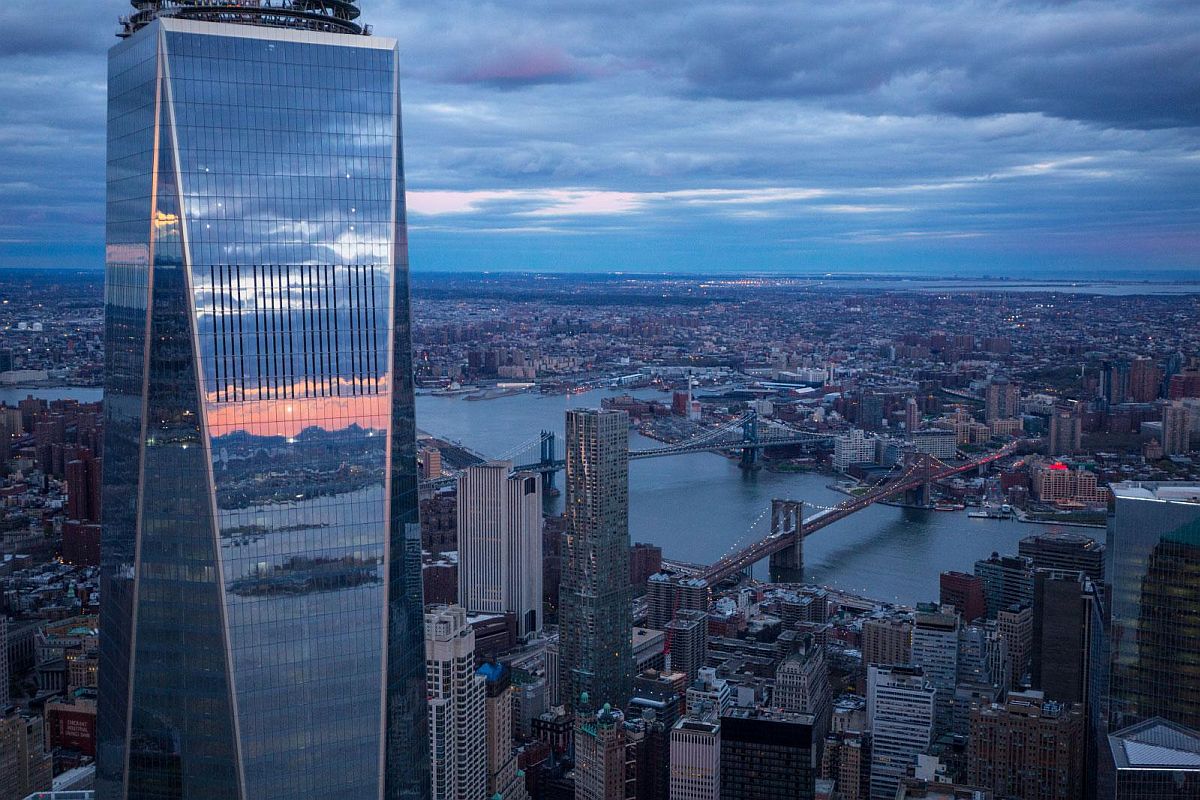
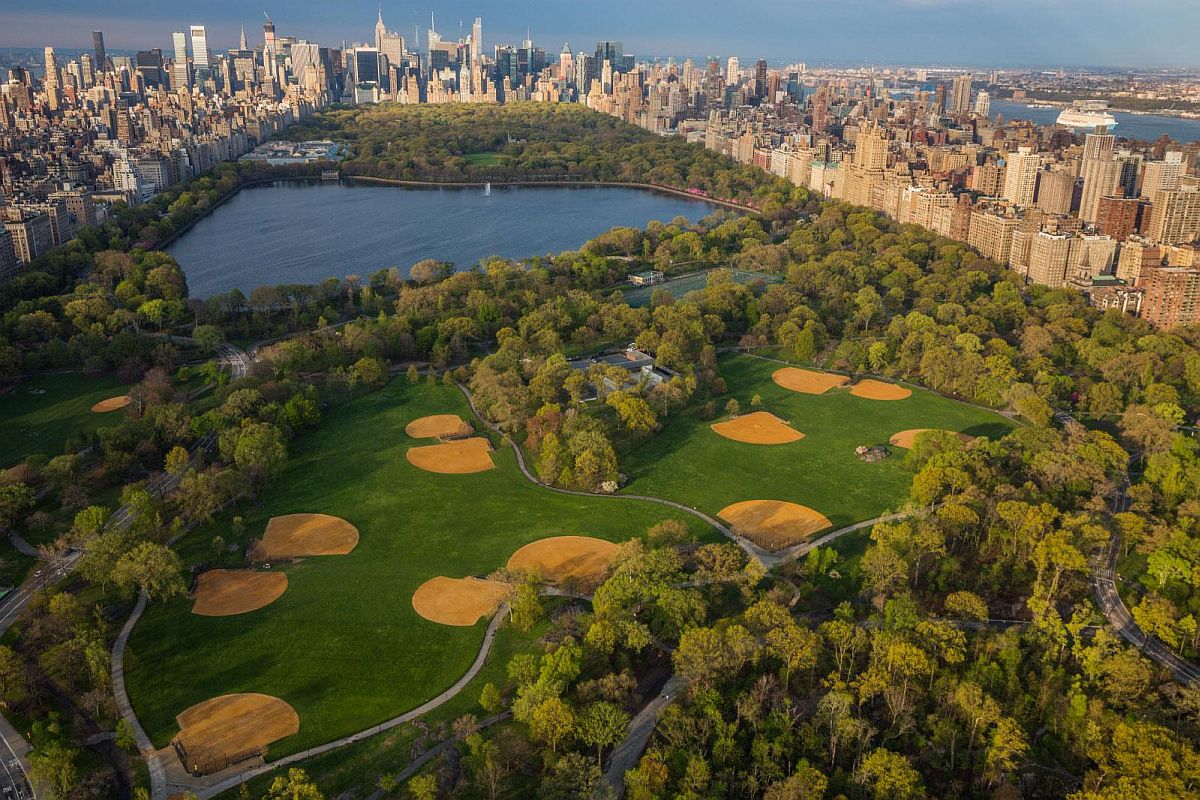
In this view, the trees are not the only things that have burst into sight. In the middle distance, amid the towering wall of buildings that fills the frame just south of the park, 432 Park Avenue, has poked its orange-swathed bulk above the skyline, on its way to record heights. Among the many other small things worth noting here: The fountain in the Central Park reservoir is sited close to the central north-west axis of the park (see page xxx), and there is a cruise ship in the Hudson approaching the Manhattan Cruise Terminal at West 52nd Street © George Steinmetz – New York Air: The View From Above

For roughly a century, between 1842 and 1930, this patch of Central Park was the bottom of the Lower Reservoir, which held Manhattan’s water supply. By the turn of the century, it was clear that the reservoir would not be needed in the future, and all sorts of ideas were floated for the use of the land. In the end, the Great Lawn, a simple grassy meadow, was installed, but not before a village of shacks holding people made homeless by the Great Depression occupied the dry reservoir bed. Such “Hoovervilles” did not help the reputation of the President who was in office when disaster struck. © George Steinmetz – New York Air: The View From Above
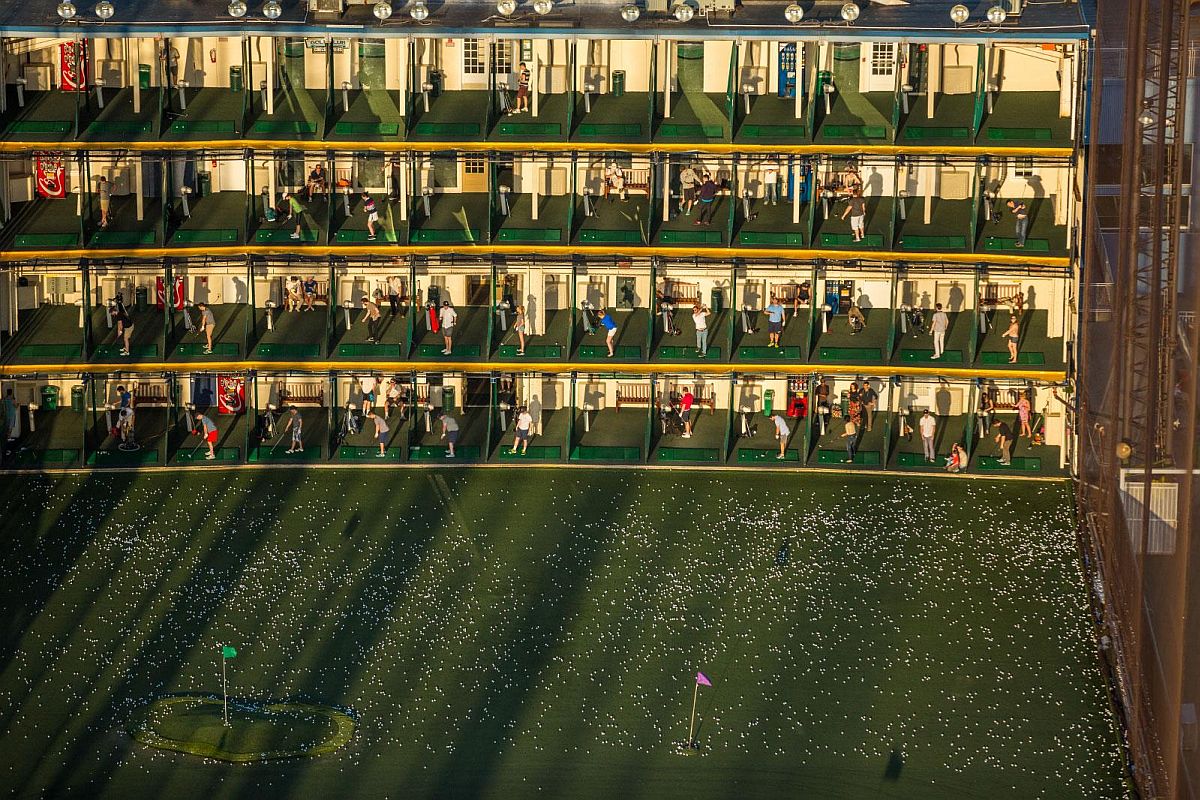
The Golf Club, a driving range, and sunbathers at Chelsea Piers on the Hudson at West 18th Street. The piers have been a recreation area since the mid-1990s, but a century ago, on April 20, 1912, the RMS Titanic was scheduled to dock right here. Before there were piers in the river on this spot, there was landfill, and about eighteen blocks of the long-gone Thirteenth Avenue. Because of a dispute with the Army, which prohibited the city from building into the river beyond a certain point, room for the piers had to be made by removing shoreline. The firm that built them, Warren & Wetmore, also designed Grand Central Terminal at around the same time, and for the same purpose: to get more people into and out of the city, faster, and in style. © George Steinmetz – New York Air: The View From Above
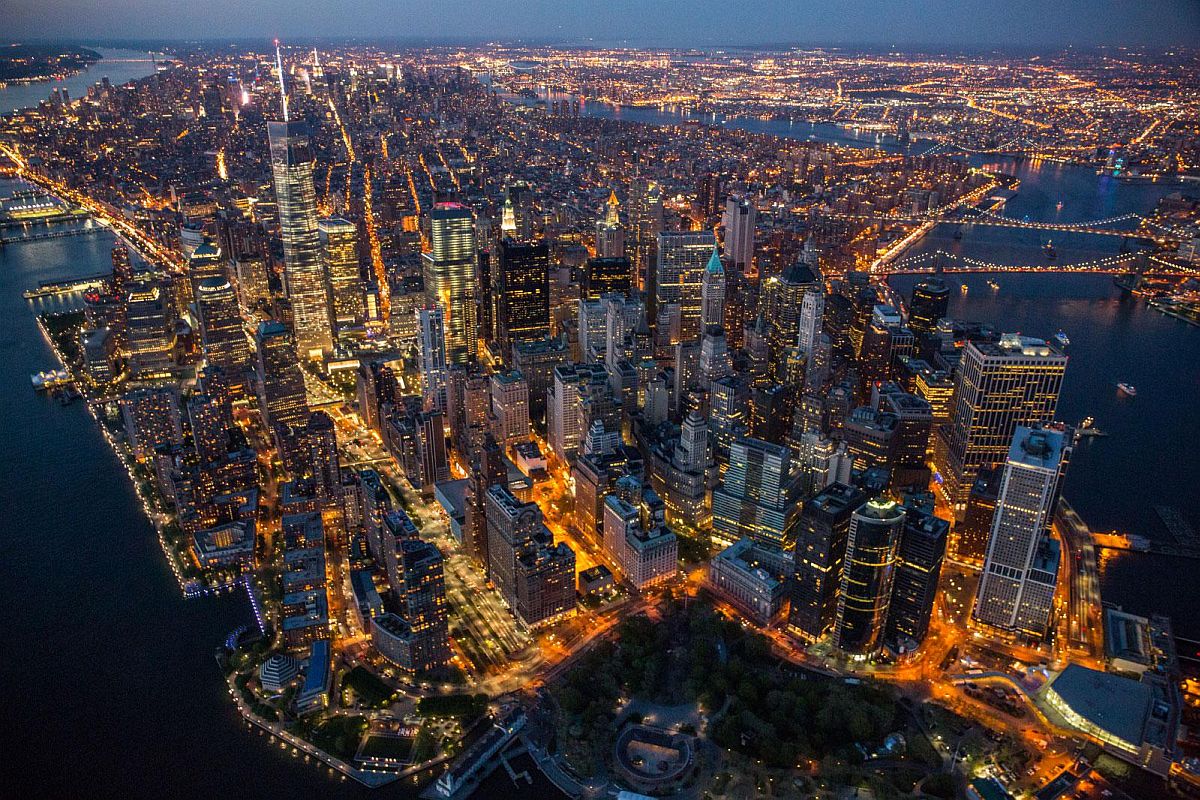
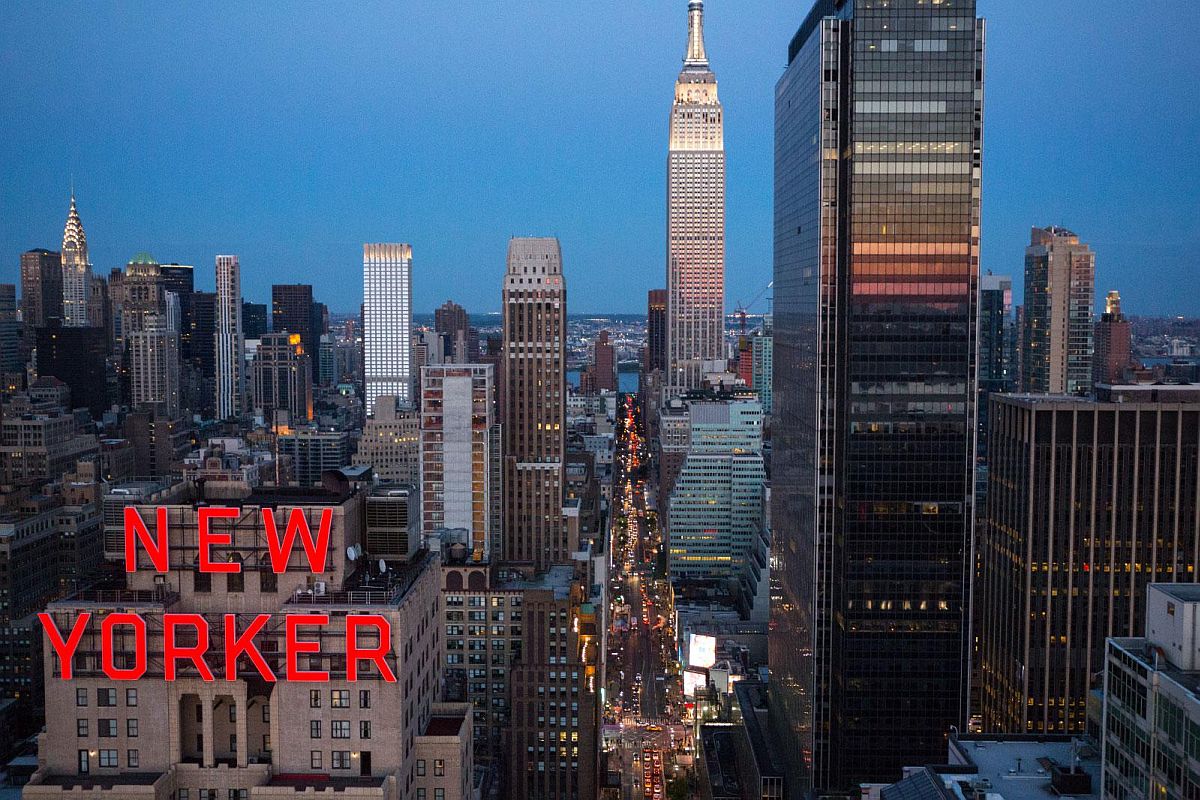
The New Yorker Hotel on Eighth Avenue and 34th Street was the largest in New York when it opened in 1930. In the days when the well-heeled traveler from Chicago and the West debarked from the Pennsylvania Railroad’s Broadway Limited express train at Pennsylvania Station across the street, the Art Deco hotel sat on top of the world. The rise of air travel, the demolition of the station, and the decline of the neighborhood all led to one conclusion, and in 1972 it closed its doors. But in New York, everything comes around again: It is, after many vicissitudes, once again an up-and-coming hotel, and while it may not be New York’s chicest, it can claim the best sign. © George Steinmetz – New York Air: The View From Above
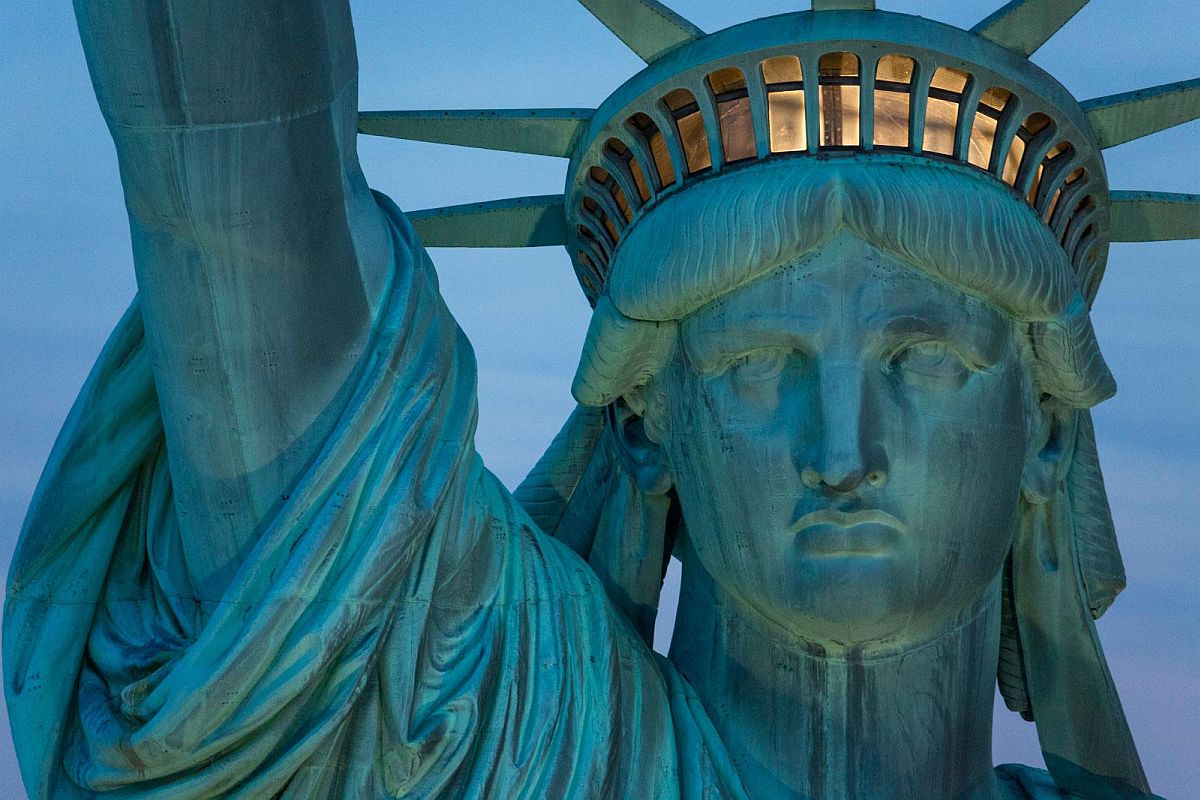
The statue and its pedestal rest on a marvelous base adapted from an early nineteenth-century fort on the site, which was built in the form of an eleven-point star. Star-shaped forts dated back to fifteenth-century Italy: The design permitted defenders to fire down on the backs of attackers seeking to scale their walls. Like other sturdy buildings in New York Harbor, the fort served briefly as an immigrant examining station before being converted to its current, noble use. © George Steinmetz – New York Air: The View From Above
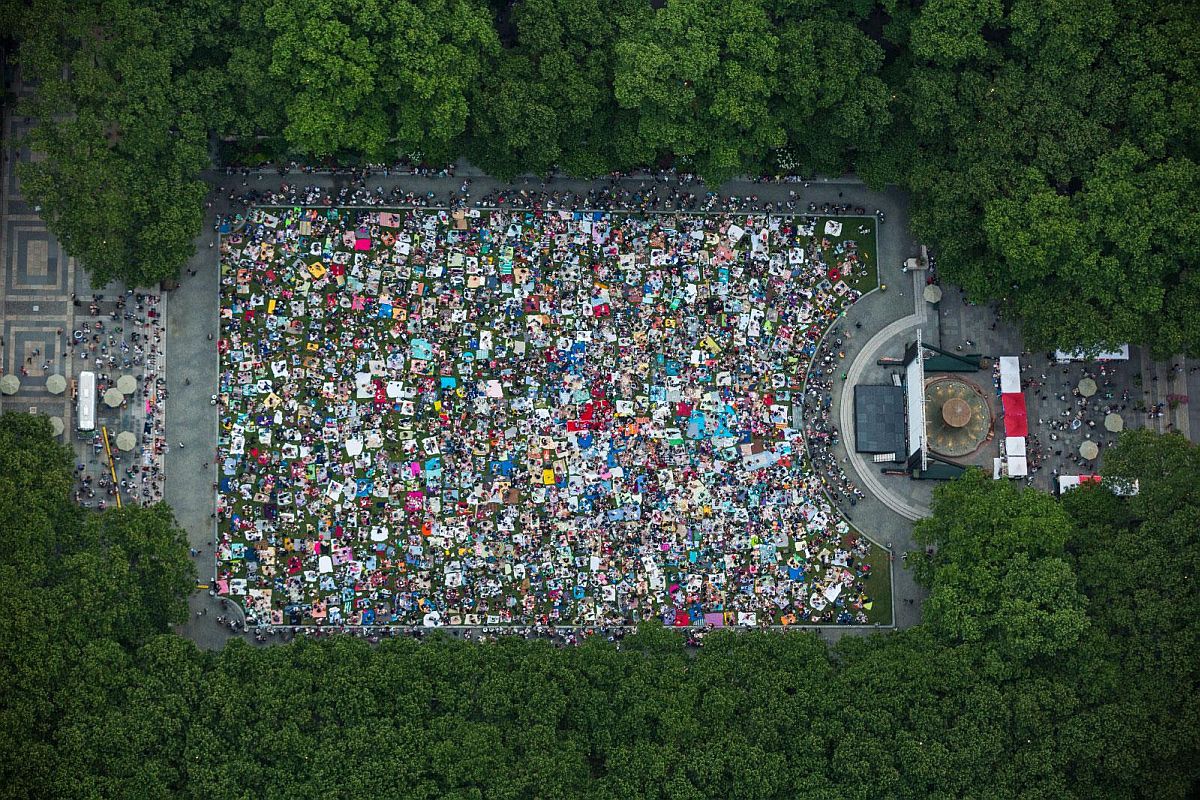

Arthur Ashe Stadium is part of the USTA Billie Jean King National Tennis Center located within Flushing Meadows-Corona Park area of Queens, in New York City. It is the largest tennis-specific stadium in the world by capacity, and is the main stadium of the US Open. The stadium is named after Arthur Ashe, who won the inaugural US Open in 1968. © George Steinmetz – New York Air: The View From Above
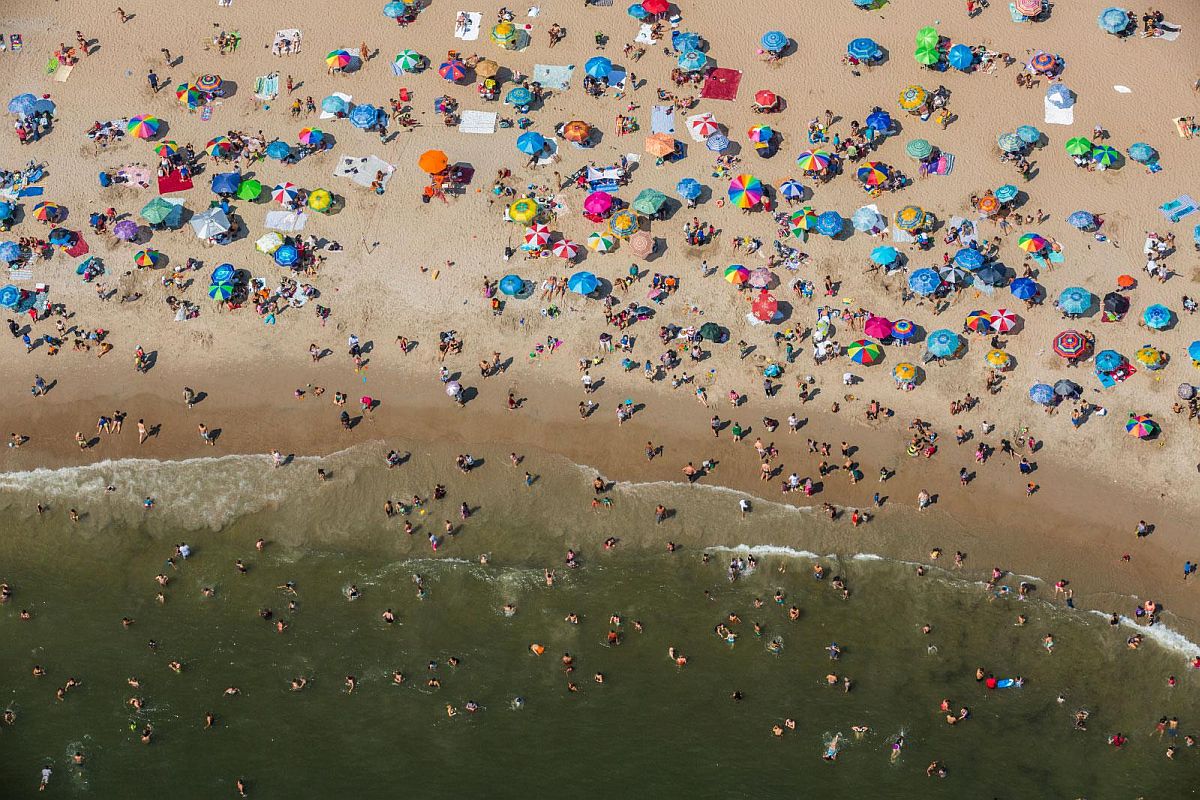
Through the 1950s, a million people might squeeze onto Coney Island Beach on a hot summer day and newspapers would send photographers on the Fourth of July to capture the festive scene—in some of the shots, you can’t see the sand for the people. Today, relaxed sunbathers have more room to stretch out. This photograph was taken over the Labor Day Weekend. © George Steinmetz – New York Air: The View From Above

